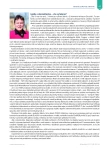Combination treatment with antihypertensive and hypolipidemic drugs
Authors:
Jan Václavík
Authors‘ workplace:
I. Interní klinika – kardiologická FN a LF UP Olomouc
Published in:
AtheroRev 2017; 2(2): 125-129
Category:
reviews
Overview
Dyslipidemia is present in every other patient with arterial hypertension and is the most common additional risk factor. The evidence of the benefit of cholesterol lowering in hypertensive patients was provided by the ASCOT and HOPE-3 trials. Concurrent treatment of hypertension and dyslipidemia reduces the incidence of cardiovascular events significantly more than treating only one of these diseases. A mild long-term reduction in blood pressure and LDL cholesterol has a potential to significantly reduce the incidence of cardiovascular events. To ensure better adherence of patients to treatment and to achieve better control of risk factors, use of fixed combinations should be considered.
Key words:
arterial hypertension, dyslipidemia, fixed combinations, cardiovascular events, treatment
Sources
1. Mancia G, Fagard R, Narkiewicz K et al. 2013 ESH/ESC guidelines for the management of arterial hypertension: The Task Force for the management of arterial hypertension of the European Society of Hypertension (ESH) and of the European Society of Cardiology (ESC). J Hypertens 2013; 31(7): 1281–1357. Dostupné z DOI: <http://dx.doi.org/10.1097/01.hjh.0000431740.32696.cc>.
2. Piepoli MF, Hoes AW, Agewall S et al. 2016 European Guidelines on cardiovascular disease prevention in clinical practice: The Sixth Joint Task Force of the European Society of Cardiology and Other Societies on Cardiovascular Disease Prevention in Clinical Practice (constituted by representatives of 10 societies and by invited experts). Developed with the special contribution of the European Association for Cardiovascular Prevention & Rehabilitation (EACPR). Eur Heart J 2016; 37(39): 2315–2381. Dostupné z DOI: <http://dx.doi.org/10.1093/eurheartj/ehw106>.
3. Thoenes M, Bramlage P, Zhong S et al. Hypertension control and cardiometabolic risk: a regional perspective. Cardiol Res Pract 2012; 2012: 925046. Dostupné z DOI: <http://dx.doi.org/10.1155/2012/925046>.
4. Jackson R, Lawes CMM, Bennett DA et al. Treatment with drugs to lower blood pressure and blood cholesterol based on an individual’s absolute cardiovascular risk. Lancet 2005; 365(9457): 434–441. Dostupné z DOI: <http://dx.doi.org/10.1016/S0140–6736(05)17833–7>.
5. Emberson J, Whincup P, Morris R, et al. Evaluating the impact of population and high-risk strategies for the primary prevention of cardiovascular disease. Eur Heart J 2004; 25(6): 484–491.
6. Ference B, Ference T, Brook RD et al. A naturally randomized trial comparing the effect of long-term exposure to lower LDL-C, lower SBP, or both on the risk of cardiovascular disease. ESC Congress 365. Rome 2016. FP Number 3163.
7. Sever PS, Dahlöf B, Poulter NR et al. Prevention of coronary and stroke events with atorvastatin in hypertensive patients who have average or lower-than-average cholesterol concentrations, in the Anglo-Scandinavian Cardiac Outcomes Trial--Lipid Lowering Arm (ASCOT-LLA): a multicentre randomised controlled trial. Lancet 2003; 361(9364):1149–1158.
8. Sever P, Dahlöf B, Poulter N et al. Potential synergy between lipid-lowering and blood-pressure-lowering in the Anglo-Scandinavian Cardiac Outcomes Trial. Eur Heart J 2006; 27(24): 2982–2988. Erratum in Eur Heart J 2007; 28(1): 142.
9. Yusuf S, Lonn E, Pais P et al. Blood-Pressure and Cholesterol Lowering in Persons without Cardiovascular Disease. N Engl J Med 2016; 374(21): 2032–2043. Dostupné z DOI: <http://dx.doi.org/10.1056/NEJMoa1600177>.
10. Yusuf S, Bosch J, Dagenais G et al. Cholesterol Lowering in Intermediate-Risk Persons without Cardiovascular Disease. N Engl J Med 2016; 374(21): 2021–2031. Dostupné z DOI: <http://dx.doi.org/10.1056/NEJMoa1600176>.
11. Lonn EM, Bosch J, López-Jaramillo P et al. Blood-Pressure Lowering in Intermediate-Risk Persons without Cardiovascular Disease. N Engl J Med 2016; 374(21): 2009–2020. Dostupné z DOI: <http://dx.doi.org/10.1056/NEJMoa1600175>.
12. Kolandaivelu K, Leiden BB, O’Gara PT et al. Non-adherence to cardiovascular medications. Eur Heart J 2014; 35(46): 3267–3276. Dostupné z DOI: <http://dx.doi.org/10.1093/eurheartj/ehu364>.
13. Jin J, Sklar GE, Min Sen Oh V et al. Factors affecting therapeutic compliance: A review from the patient’s perspective. Ther Clin Risk Manag 2008; 4(1): 269–286.
14. Fung V, Huang J, Brand R et al. Hypertension treatment in a medicare population: Adherence and systolic blood pressure control. Clin Ther 2007; 29(5): 972–984.
15. Chapman RH, Benner JS, Petrilla AA, et al. Predictors of adherence with antihypertensive and lipid-lowering therapy. Arch Intern Med 2005; 165(10): 1147–1152.
16. Bangalore S, Kamalakkannan G, Parkar S et al. Fixed-dose combinations improve medication compliance: a meta-analysis. Am J Med 2007; 120(8): 713–719.
17. Egan BM, Bandyopadhyay D, Shaftman SR et al. Initial monotherapy and combination therapy and hypertension control the first year. Hypertension 2012; 59(6): 1124–1131. Dostupné z DOI: <http://dx.doi.org/10.1161/HYPERTENSIONAHA.112.194167>.
18. Thom S, Poulter N, Field J et al. Effects of a Fixed-Dose Combination Strategy on Adherence and Risk Factors in Patients With or at High Risk of CVD. JAMA 2013; 310(9): 918–929. Dostupné z DOI: <http://dx.doi.org/10.1001/jama.2013.277064>. Erratum in JAMA 2013; 310(14): 1507.
19. Lipertance. Souhrn údajů o přípravku. Státní ústav pro kontrolu léčiv (SÚKL) 2016; sp. zn. sukls127191/2016. Dostupné z WWW:
Labels
Angiology Diabetology Internal medicine Cardiology General practitioner for adultsArticle was published in
Athero Review

2017 Issue 2
Most read in this issue
- What is the role of nutriceuticals in dyslipidemia management? Armolipid Plus
- Combination treatment with antihypertensive and hypolipidemic drugs
-
Remnant cholesterol: a fact or fiction?
Reflection on the problems related to remnant cholesterol - Changes in the lipid spectrum in endocrinopathies
